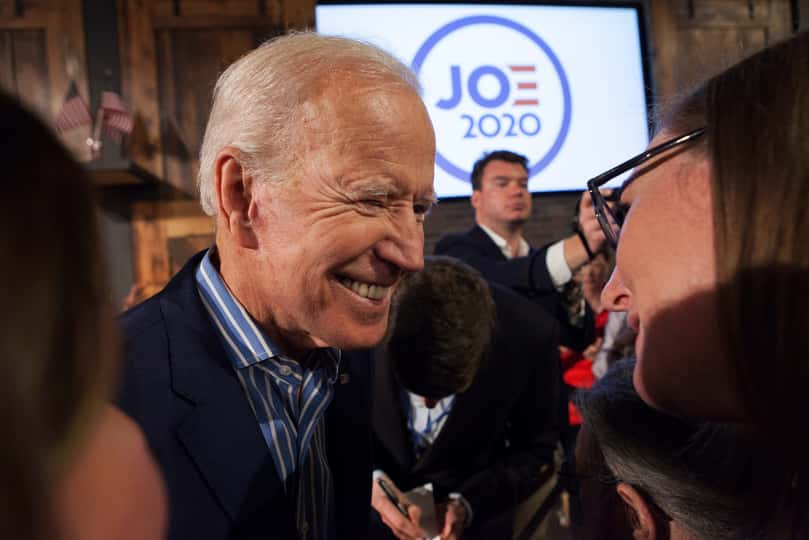After four years of a Donald Trump-led Republican administration, the U.S. is about to see Democratic leadership of the U.S. House of Representatives, the U.S. Senate, and the White House. The Democrats’ electoral gains should allow the incoming Biden administration to introduce and pass laws and regulations relatively easily.
It is no secret that Joe Biden is a pro-climate heavyweight. In fact, the primary focus of his election campaign was a $2 trillion so-called “Green New Deal”, which aims to reshape the country’s industrial sector and business operations over the next couple of decades. He has also advocated the need for comprehensive infrastructure development to accelerate and sustain these structural reforms.
Democratic governance is also expected to spell larger fiscal stimulus checks, bolstering economic recovery. However, given the Democratic party’s antagonistic view on monopolistic practices, the FAANG tech giants, which have been on the radar of Federal regulators for some time are expected to be under even stricter scrutiny under the new administration. This should allow small- and mid-cap tech companies to progress because the demand for technology should increase even after the pandemic is vanquished.
ETFs such as Invesco WilderHill Clean Energy ETF (PBW - Get Rating), First Trust Technology AlphaDEX Fund (FXL - Get Rating), and Materials Select Sector SPDR Fund (XLB - Get Rating) are well-positioned to gain given their unique exposure to the industries that are expected to benefit under the Biden administration.
Invesco WilderHill Clean Energy ETF (PBW - Get Rating)
PBW is an assorted clean energy ETF that invests in companies that use renewable energy for their daily operations. The ETF’s proprietary selection process is different from the median clean energy ETFs in that it invests in companies that have indirect exposure to the renewable energy sector. It has approximately $2.88 billion in assets under management (AUM), and its major holdings include ReneSola Ltd. (SOL), Lithium Americas Corp. (LAC) and NIO Limited (NIO).
PBW has an expense ratio of 0.7%, which is more than double its category average of 0.33%. However, the ETF has a stable environmental, social and government outlook; it has a “BBB” MSCI Rating. PBW has gained 243.9% over the past year and 182.3% over the past six months. The ETF pays $0.45 in dividends annually, yielding $0.36 at the stock’s current price. Its dividend payouts have increased at a CAGR of 15.2% over the past three years.
How does PBW stack up for the POWR Ratings?
A for Trade Grade
A for Buy & Hold Grade
A for Peer Grade
A for Overall POWR Rating.
You cannot ask for better. It is currently ranked #2 of 39 ETFs in the Energy Equities ETFs group.
First Trust Technology AlphaDEX Fund (FXL - Get Rating)
FXL invests in the best-performing tech companies based in the U.S. It closely tracks the StrataQuant Technology Index, with the aim of outperforming the broader markets. The ETF looks closely at the fundamentals and associated valuation of a stock to gauge its growth potential in tandem with prevailing market trends. It has approximately $2.66 billion in assets under management. FXL’s major holdings include Applied Materials, Inc. (AMAT), Teradyne, Inc. (TER) and Pinterest, inc. (PINS).
FXL has consistently outperformed the technology segment benchmark Thomson Reuters US Technology over the past five years. Also, the ETF has an MSCI ESG Rating of “BBB”, reflecting its resiliency in the environmental, social and governance sphere.
FXL has an expense ratio of 0.61%, which is higher than the category average of 0.51%. The ETF has gained 51.8% over the past year and 37.6% over the past six months. Its four-year average dividend yield is 0.39%.
It is no surprise that FXL is rated “Strong Buy” in our POWR Ratings system. It has an “A” for Trade Grade, Buy & Hold Grade and Industry Rank. Of 100 ETFs in the Technology Equities ETFs group, FXL is currently ranked #18.
Materials Select Sector SPDR Fund (XLB - Get Rating)
With approximately $6.39 billion in assets under management, XLB is one of the biggest ETFs operating in the materials sector in the U.S. It invests in large-cap basic materials companies in the S&P 500 index. The ETF allows investors to gain exposure to intricate commodity markets. It is a passively managed fund that aims to replicate the returns generated by Materials Select Sector Index. XLB’s major holdings include Linde plc (LIN), Air Products and Chemicals, Inc. (APD) and DuPont De Nemours, Inc. (DD).
XLB is one of the most cost-effective ETFs in this sector with an expense ratio of 0.13%. In comparison, the category average expense ratio is 0.47%. XLB has gained 27.1% over the past year, and 32.3% over the past six months. The ETF distributed $1.24 as dividends annually, yielding 1.62% at the stock’s current price. Its dividend payouts have increased at a CAGR of 7.3% over the past three years.
XLB has a “Strong Buy” POWR Rating, with an “A” for Trade Grade, Buy & Hold Grade and Peer Grade. It is currently ranked #2 of 32 ETFs in the Industrials Equities ETFs group.
Want More Great Investing Ideas?
9 “MUST OWN” Growth Stocks for 2021
Is This ANOTHER Stock Market Bubble?
7 Best ETFs for the NEXT Bull Market
5 WINNING Stocks Chart Patterns
PBW shares were trading at $126.17 per share on Thursday afternoon, up $0.02 (+0.02%). Year-to-date, PBW has gained 22.03%, versus a 1.48% rise in the benchmark S&P 500 index during the same period.
About the Author: Aditi Ganguly

Aditi is an experienced content developer and financial writer who is passionate about helping investors understand the do’s and don'ts of investing. She has a keen interest in the stock market and has a fundamental approach when analyzing equities. More...
More Resources for the Stocks in this Article
| Ticker | POWR Rating | Industry Rank | Rank in Industry |
| PBW | Get Rating | Get Rating | Get Rating |
| FXL | Get Rating | Get Rating | Get Rating |
| XLB | Get Rating | Get Rating | Get Rating |






